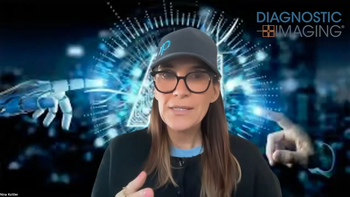
Dose can drop in large patients
The trade-off between image noise and radiation exposure in low-dose multislice CT for kidney stone detection has not been kind to overweight patients. They are often excluded from low-dose studies, scanned at higher doses, or scanned repeatedly with normal doses.
The trade-off between image noise and radiation exposure in low-dose multislice CT for kidney stone detection has not been kind to overweight patients. They are often excluded from low-dose studies, scanned at higher doses, or scanned repeatedly with normal doses. A 4D tube current modulation-adapted to the x-, y-, and z-planes continuously during scanning-was found to reduce dose by more than 60% without affecting accuracy in overweight patients (AJR 2007;188:553-562).
Dr. Tom H. Mulkens, a radiologist at Heilig Hart Hospital in Lier, Belgium, and colleagues concluded that this technique could become standard in overweight and obese patients with suspected acute renal colic.
Newsletter
Stay at the forefront of radiology with the Diagnostic Imaging newsletter, delivering the latest news, clinical insights, and imaging advancements for today’s radiologists.




























